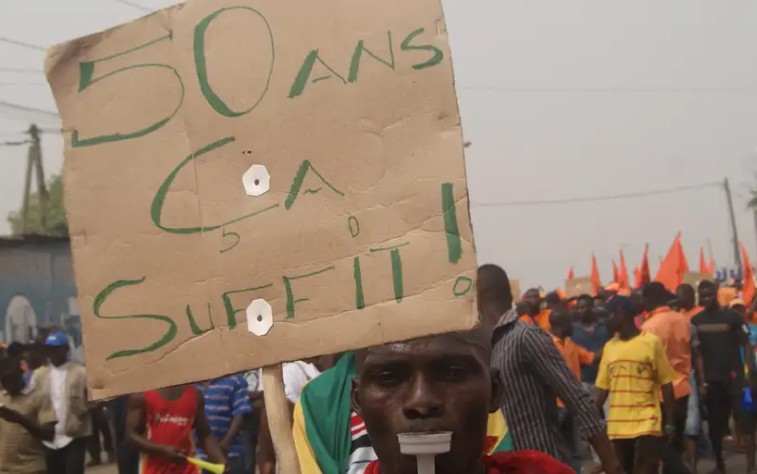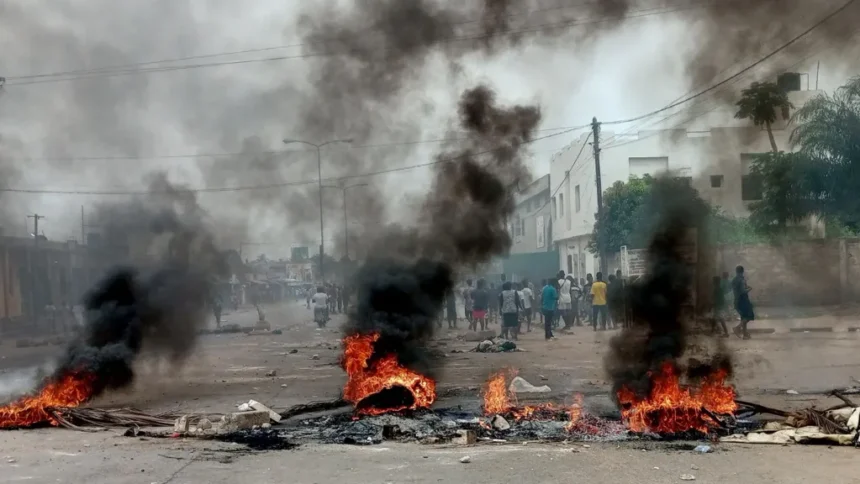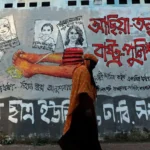Introduction
Deadly protests have rocked the West African nation of Togo, leaving at least seven people dead and dozens more injured, according to civic rights groups Togo protests. The violence stems from escalating public anger against President Faure Gnassingbé and recent constitutional reforms that solidify his long-standing grip on power.

What Sparked the Protests?
On Thursday, youth-led movements and online activists launched demonstrations in the capital Lomé demanding political reform, the release of political prisoners, and the resignation of President Gnassingbé. The unrest intensified after his appointment to a new position—President of the Council of Ministers—a role without term limits, following changes to Togo’s constitution that effectively eliminated direct presidential elections.
Violence Erupts in Lomé
The demonstrations turned violent on Friday and Saturday, particularly in opposition strongholds like Bè. Riot police deployed tear gas and forcefully dispersed crowds, while protesters hurled stones and clashed with security forces in the streets. Rights groups reported the deaths of at least seven protesters and over 50 arrests.
By Sunday, calm returned to much of the capital, with markets and shops reopening in areas like Assigamé. However, the tensions remain high.
Human Rights Outcry
A coalition of 23 rights groups, known as the National Platform for Civic Space and Development Effectiveness, issued a joint statement condemning the use of “disproportionate force” and calling for an immediate independent investigation into the deaths and injuries.
“Peaceful protest is a fundamental right recognized by both the Togolese Constitution and international law,” the coalition declared, urging the government to respect civil liberties and release all political detainees.

Political Repression and Aamron’s Arrest
The protests were further fueled by the arrest and psychiatric detention of rapper Narcisse Essowè Tchalla, known as Aamron. His detention earlier this month triggered public outrage and protests across Togo. While most arrested protesters have since been released, at least three remain in custody.
A History of Dynastic Rule
Faure Gnassingbé has ruled Togo since 2005, following the death of his father, Gnassingbé Eyadéma, who had ruled for 38 years. With the family’s reign now entering its 58th year, critics say the recent reforms cement a de facto monarchy.
The new parliamentary system introduced in May has eliminated direct presidential elections and sparked widespread fears of increased authoritarianism.
Government’s Response

The Togolese government has accused protest organizers of orchestrating a “campaign of disinformation and hatred” from abroad and has threatened legal action. It maintains that protests remain banned since 2022 for security reasons.
Conclusion
With civic unrest growing and international pressure mounting, Togo faces a pivotal moment. As the country recovers from days of violence, the world watches to see whether authorities will pursue dialogue—or continue down the path of repression.
Further Reading
External Sources










